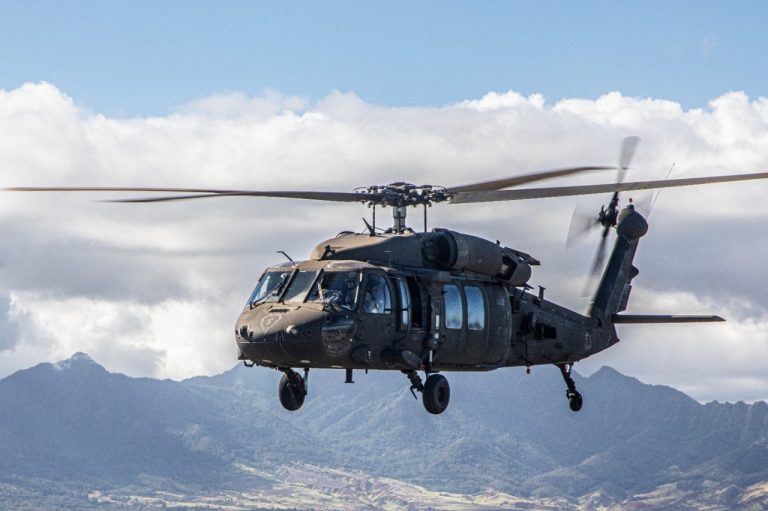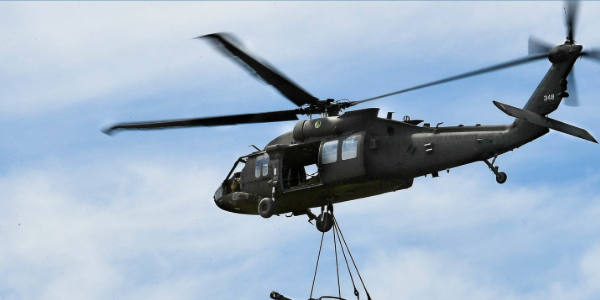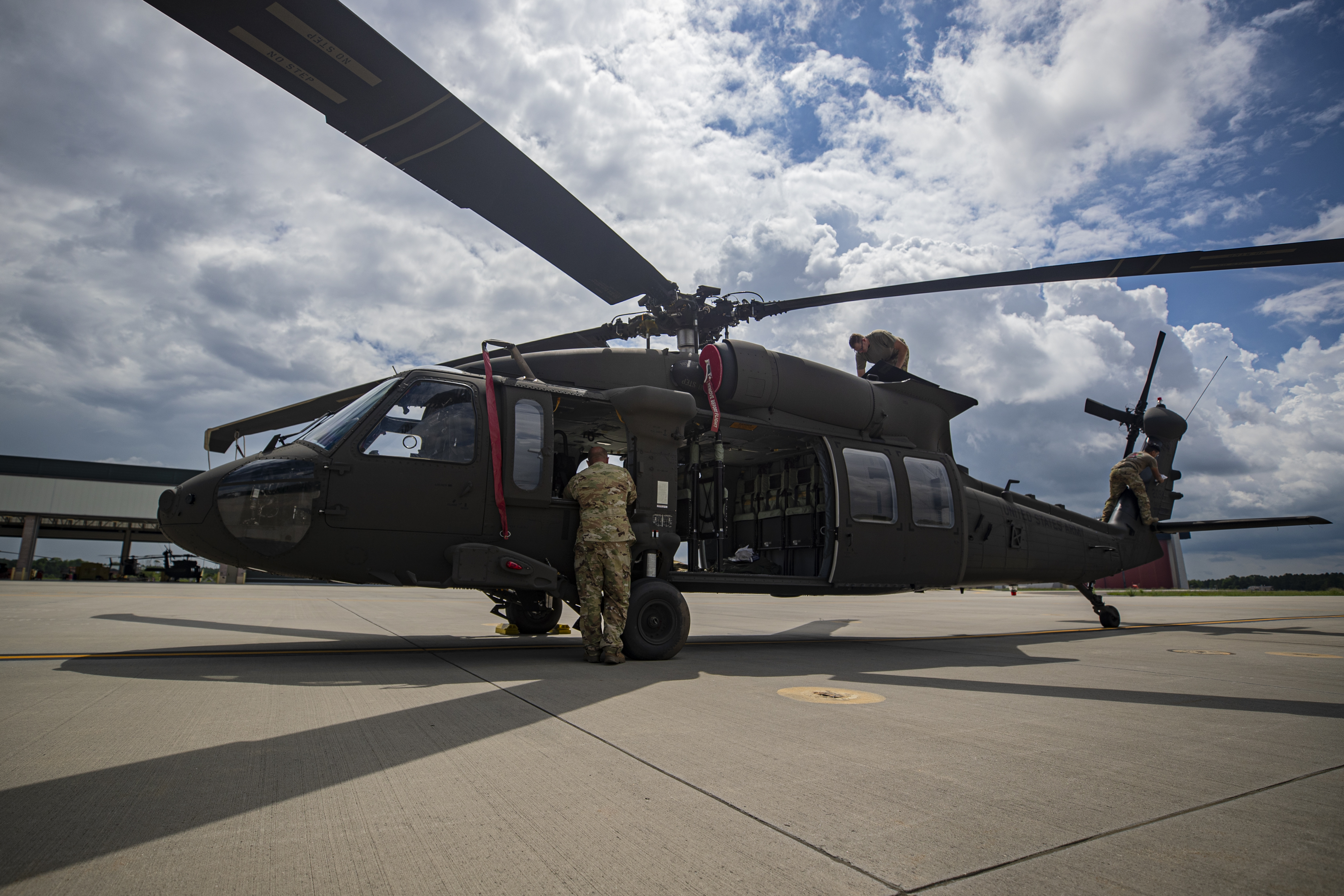UH 60 Black Hawk: Military Helicopter Features and Capabilities
UH 60 Black Hawk: Military Helicopter Features and Capabilities
Blog Article
Discovering the Cutting-edge Innovation Behind Aircraft Design and Design
The field of airplane design and design is witnessing a transformative change driven by innovative innovations that boost performance, performance, and sustainability. As the sector grapples with the difficulties of environmental obligation, advancements in lasting aviation innovations guarantee to reshape the future.
Advanced Materials in Aircraft Style
Just how can the integration of advanced materials revolutionize aircraft design? The incorporation of advanced materials, such as carbon fiber composites, titanium alloys, and progressed porcelains, plays a crucial duty in boosting airplane performance and performance.
In addition, innovative products display enhanced resistance to rust and exhaustion, resulting in reduced upkeep costs and prolonged life span. For example, the use of titanium in important parts helps endure extreme temperature levels and tensions, while carbon fiber composites provide adaptability in layout and production processes. This adaptability enables for more wind resistant forms, adding to premium efficiency qualities.
Additionally, the combination of smart products, which can alter residential properties in action to external stimulations, opens brand-new opportunities for flexible systems in airplane design. uh 60. These technologies guarantee not just to improve safety and functional effectiveness but additionally to add to sustainability initiatives by decreasing ecological effect with lowered discharges. In recap, advanced products are redefining the landscape of airplane style, leading the way for extra effective, sturdy, and eco pleasant aviation remedies
Wind Resistant Advancements for Efficiency
Aerodynamic technologies play an essential function in enhancing aircraft efficiency, significantly influencing gas intake and overall performance. Breakthroughs in airfoil design, such as the intro of supercritical wings, permit optimized lift-to-drag ratios, lowering drag at transonic speeds. These developments make it possible for aircraft to maintain higher rates with reduced fuel expenditure, directly influencing functional costs and environmental sustainability.
Additionally, the assimilation of winglets has shown efficient in minimizing vortex-induced drag at the tips of wings, even more enhancing fuel effectiveness - uh 60. This layout modification leads to a decrease in wake turbulence, adding to improved wind resistant performance throughout cruise problems

Additionally, computational fluid characteristics (CFD) devices have revolutionized the screening and improvement of wind resistant forms, enabling precise simulations of air flow around aircraft (uh 60). This makes it possible for designers to introduce constantly, ensuring that modern-day airplane not only fulfill regulative requirements but additionally push the boundaries of performance in air travel

Role of Computer System Simulations
Computer system simulations have come to be an essential device in the field of airplane design, allowing designers to conduct thorough analyses and optimizations of different layout elements. These simulations enable the virtual screening of wind resistant homes, architectural integrity, and performance metrics long prior to physical prototypes are developed. By using computational fluid dynamics (CFD) and limited component analysis (FEA), engineers can forecast how air flows around the airplane and just how different materials will reply to stress and strain.
Additionally, computer system simulations facilitate the exploration of a variety of situations and variables, speeding up the layout procedure and reducing expenses related to physical screening. This capacity not just enhances the accuracy of predictions relating to aircraft behavior yet also uses insights right into potential layout improvements that may not be immediately noticeable through typical approaches.

Additionally, simulations aid make sure compliance with stringent safety and security policies by allowing designers to identify and fix prospective issues early in the layout phase. The assimilation of simulation innovations right into the aircraft design procedure emphasizes the considerable innovations in engineering techniques, eventually adding to the advancement of much safer, extra effective, and eco-friendly airplane.
Expert System in Engineering
Synthetic intelligence (AI) is revolutionizing the engineering landscape, especially in airplane layout, by boosting decision-making procedures and enhancing style process. Through machine understanding formulas, AI can evaluate large datasets, discovering patterns and understandings that inform design options and improve general performance.
AI applications in airplane design include generative style, where algorithms create numerous style alternatives based upon defined criteria, permitting designers to review a wider array of opportunities. This not only speeds up the layout phase but likewise my response ensures that the end products fulfill rigorous efficiency and safety requirements.
Additionally, AI-driven anticipating analytics facilitate maintenance scheduling by examining historic data and forecasting potential failings. This proactive strategy decreases downtime and boosts aircraft dependability.
Additionally, AI aids in simulation and modeling, making it possible for engineers to check designs under different problems without the need for physical models. This capacity reduces growth timelines and decreases prices related to traditional screening approaches.
Sustainable Aviation Technologies
Exactly how can the aeronautics industry successfully equilibrium development and environmental obligation? The response lies in imp source the adoption of sustainable air travel modern technologies that focus on performance and reduce carbon discharges. Advancements such as lasting aeronautics fuels (SAFs), which are stemmed from eco-friendly sources, have actually emerged as a crucial component in attaining reduced lifecycle discharges. SAFs can significantly reduce the carbon impact of trips, making them a sensible choice to conventional jet gas.
Furthermore, improvements in airplane design, such as the development of lighter products and more aerodynamically efficient shapes, add to improved fuel efficiency. Electric and hybrid propulsion systems are also getting grip, offering a pathway to decrease dependence on nonrenewable fuel sources and reduce greenhouse gas discharges.
The integration of these innovations is supported by regulative structures and industry partnerships intended at establishing enthusiastic sustainability targets. In addition, electronic devices like information analytics and artificial intelligence can optimize flight procedures, further improving gas efficiency. By embracing lasting techniques and modern technologies, the aviation industry can not just fulfill the growing demand for flight yet additionally play an essential function in attending to environment adjustment, ensuring a more sustainable future for air transportation.
Final Thought
The merging of innovative products, aerodynamic developments, and innovative modern Look At This technologies notes a significant development in airplane style and engineering. The combination of carbon fiber composites, titanium alloys, and AI-driven processes not just improves performance and effectiveness yet also enhances workflows and predictive upkeep. The ongoing development of sustainable aviation modern technologies underscores a dedication to environmental responsibility, leading the means for a greener future in air travel. This continuous innovation will form the sector's trajectory for many years to find.

Computer system simulations have become a vital device in the area of aircraft layout, allowing engineers to perform comprehensive analyses and optimizations of various layout elements.The convergence of innovative products, aerodynamic innovations, and advanced innovations marks a considerable development in aircraft design and engineering.
Report this page